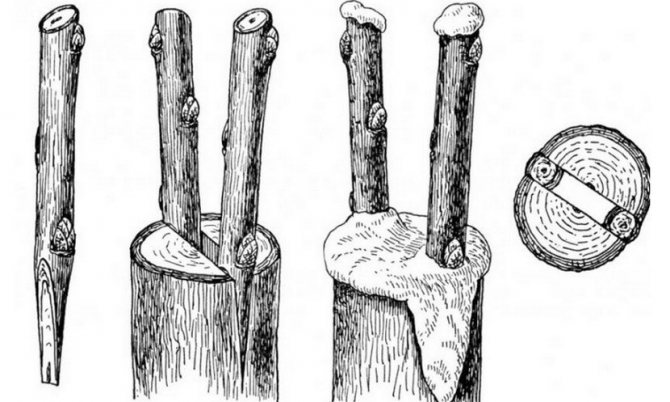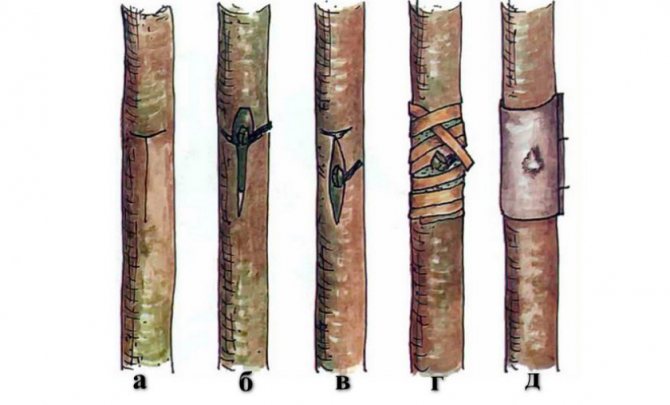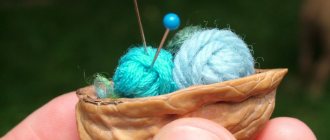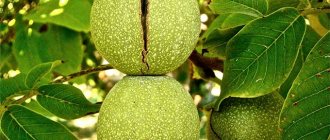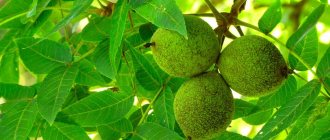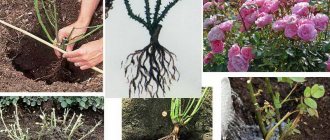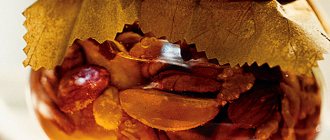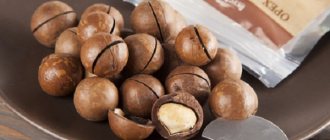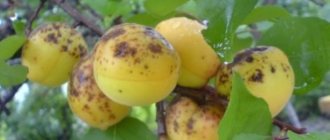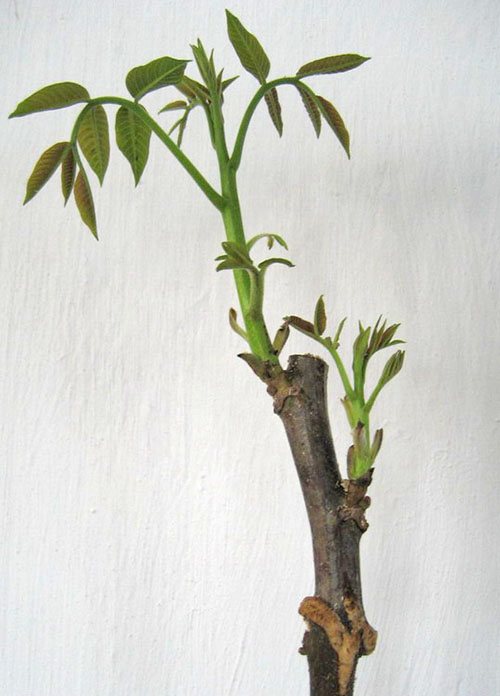
A peculiarity of walnuts is their very slow growth. Unlike fruit trees, which begin to bear fruit on average from the third year of life, the nut does not form fruit before it reaches 8 years of age. However, experienced gardeners have known for a long time that it is possible to speed up fruiting in half if the nut is grafted. In this case, the first crop will appear in a maximum of 5 years. In addition, grafting allows you to preserve the varietal qualities of the nut, because trees grown by the seed method are often pollinated, and instead of large fruits with thin shells, small hard nuts can be obtained. The main thing in this business is to know what you can graft a walnut on, as well as choose the right scion and carry out the procedure.
Selection and preparation of stock
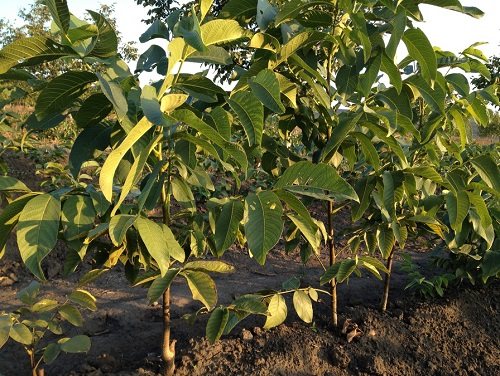

For the stock, it is recommended to use varietal nut seedlings grown from seeds not older than 3 years. Ideally, these are two-year-old trees with a stem diameter of 1-1.5 cm.
The rootstock variety must be biologically compatible with the scion, possess good frost-resistant properties, have a high resistance to diseases and restrained growth.
The choice of rootstock must be done, focusing on the climatic conditions of the region where the tree will be grown. Most often, walnuts are grafted onto seedlings:
- nut of cultivated varieties (Five-year-old, Urozhainy, Zarya Vostoka) - they are the most compatible, they tolerate frosts well and give a large yield, and the scion takes root well;
- rock walnut - it is better to choose varieties with medium or strong growth, however, it should be borne in mind that not any soil is suitable for them and trees can suffer during a particularly frosty winter;
- hinji nuts - characterized by high yields from the third year of life and resistance to diseases, but they do not tolerate cold winters.
How to choose a scion?
For the scion, it is necessary to select young branches of nuts that have formed in the current year. The main selection criterion should be the quality of the crop.
Do not use fatty, very elongated shoots as a scion, as well as branches on which buds are formed on bark bulges.
The branch should be cut, leaving an even stalk 20 cm long with developed buds, the thickness of which should be at least 0.8 cm. It is not recommended to use the buds at the base and from the top of the shoot.
Walnut grafting - video
One of the ways to reproduce fruit crops is grafting. It is carried out in order to obtain a tree with high characteristics. These include resistance to low temperatures, strong immunity. After grafting a walnut in the summer, you can get a crop that will be famous for rich harvests. But this procedure is rather complicated and requires certain skills.
Vaccination methods and their description
You can get a full-fledged walnut plant using:
- Grafting with a handle on an oblique cut
- Grafting with cuttings on a stump for the bark
- Cleavage grafting
- Budding (inoculation with an eye, that is, a kidney)
Walnut grafting - 2 most effective ways
Most often used inoculation on an oblique cut:
- On the rootstock 5 cm from the root collar, a cut is made with a sharp garden knife at an angle of 45 °
- The graft (stalk) is cut at the same angle at a distance of 10 cm from the edge
- The diameter of the cut plane must be twice the diameter of the cutting itself
- Both surfaces should be approximately the same plane
- Two surfaces are quickly connected and carefully wrapped with foil
The second method is used if the stock is much thicker than the scion. In this case, a cut in the form of a step is made on the scion, and a fresh cut in the horizontal plane is made on the rootstock.
The stalk and sapling are combined and the junction is carefully wrapped with foil. This method allows you to graft two cuttings on one seedling.
Third way:
- Chop the sapling at the top
- Make a pointed wedge at the end of the rootstock cutting
- Insert the stalk into the cleft
- Wrap tightly with foil
Fourth way The most difficult of all and requires certain skills, so non-professionals use it very rarely.
It is very important to do everything quickly when making the vaccine. Cut surfaces should be exposed to air as little as possible. Before connecting, they need to be held in a sweet solution.
Another important point is that the junction of the scion and rootstock must be very carefully covered with a film.
While watching the video, you will learn about the cultivation of walnuts.
A gardener who is not afraid of experimentation will definitely succeed by choosing one of the methods.
Walnut
Terms of vaccination
The most successful period for grafting a heat-loving culture is summer. In mid-July, they are preparing for the procedure using two-year-old seedlings. They are used for budding the walnut. Depending on where the walnut culture is propagated, the operation is planned from May to August.
The scion does not take root well if the procedure is left for the fall. Spring vaccination is also not always successful. At the end of winter, grafting can be carried out using cuttings as material. They are harvested in advance.
Budding methods
Every gardener vaccinates in his own proven ways. There are simple options for the operation and complex ones. For beginners, the budding method is suitable, which does not require special skills.
In one case, the peephole is removed along with the half-tube of the scion. Make 2 transverse cuts in the selected area with a special knife, without affecting the wood of the cutting. Then the parts are connected by cutting longitudinally. The half-tube is removed together with the kidney. The kidney should be midway between the incisions. The surface of the scion is made even, carefully cutting off the tubercles and smoothing out the roughness.
The summer method of budding takes place with the help of an unformed vegetative bud. It is removed from those shoots whose bark is still grassy. At the beginning of summer, the nut graft is just in the stage of active growth. The inoculation will be successful, since the callus quickly forms and grows at the junction of the scion and rootstock.
After 2-3 weeks, the gap between the scutellum and the bark at the inoculation site will be completely tightened.
The preparation of herbaceous scutes with a peephole for grafting is easy, since they are easy to break off at the level of the bark. In this case, the term of the procedure is shifted to May-June.
Sleeping eye budding: how it's done
The meaning of this method is that a scutellum is cut off from the bark of the rootstock and a strip of bark with a bud of the same size is inserted in its place, just cut from the cuttings of the selected variety. Prepare for the procedure in much the same way as for a surgical operation:
- the special eyepiece knife must be sharpened and clean to avoid infections
- the operating field of the scion is cleaned of dust with a clean damp cloth
- keep a special band at the ready for "dressing"
The budding technique consists of several sequential steps:
- At the rootstock on internodes, a section of bark 2.5-3 cm long is cut along the shoot, without touching the wood. Half of it is cut off and the remaining tongue is folded back.
- A healthy, well-ripened axillary bud is chosen on the prepared cuttings - a "sleeping" eye, which will be the scion. From the bark of the cutting, a shield with an eye and a petiole 5 mm long is cut off the same size, for which it is convenient to hold.
Important. The strongest mature buds are usually located in the middle of the shoot. On the stock under the tongue at the bottom of the cut, insert a scion shield. At the same time, at least one edge of the engrafted shield should closely adjoin the rootstock bark cut. The attached shield is pressed and tied tightly with tape or plastic wrap, leaving the kidney open.
Experienced gardeners often advise taking a black tape to attract infrared rays to the wound surface, given the thermophilicity of the nut. If after 3-4 weeks the shield grows together with the stock, the garden surgeon can be congratulated - the vaccination was crowned with success.
Important. To prevent the sun from drying out the graft, budding is best done on the north side of the seedling or branch. The bud takes root, and the next year, waking up after overwintering, gives rise to the shoot of the desired variety. In early spring, even before the buds awaken, an oblique cut of the branch of the mother plant is made above the grafting site.
All "wild" growth on the stock is constantly removed. It is a very exciting and pleasant story to watch how from a small defenseless bud, grafted with our own hands, a fruit-bearing tree grows, bringing benefits and pleasure to people.
Video on the correct grafting of a nut with cuttings:
Grafting knife
An important condition for a successful vaccination operation is the instrument used to cut out the kidney with a shield.
The knife can be purchased or ordered from special workshops. It has 2 blades. By placing them parallel and rigidly fastened, they get the ideal tool for grafting. The distance between the blades is 3 centimeters.
Self-manufacturing of knives from surgical scalpels or high-quality steel sheet is also encouraged. The blades are mounted on blocks of wood 10 centimeters long and 1 wide. The main requirement for an instrument is its sharpness.
Elections and stock preparation
The tree for the stock is chosen from walnut varieties:
- age at 3 years;
- with a stem diameter of 1.5 centimeters;
- frost-resistant;
- with a strong immune system.
The main thing for the scion and rootstock should be closeness in their main characteristics. You can graft a bud on such varieties of crops that have high yields, such as Five-Year Plan, Zarya Vostoka. Self-grown seedlings of rock-type walnut are used. They practice grafting a walnut onto a Manchurian nut, which is more resistant to weather disasters.
It is necessary to clear part of the rootstock stem before inoculation. Along the trunk of at least 10-15 centimeters from the ground, 2 cuts are made with a knife, but the half-pipe is not removed so that the inoculation site does not oxidize.
Interestingly, you can graft a walnut on other crops. For this, stone fruits are used - cherries, plums. From flowering shrubs, lilacs are suitable.
What should be the scion cuttings
The success of the procedure depends on the quality of the selected scion and rootstock. What can be grafted onto a walnut? It is important to choose a graft based on the following signs:
- grade. The priority is frost-resistant, high-yielding varieties with large fruits;
- the age of the scion is 1-2 years. Experienced gardeners can experiment with other "ages" of the scion. Beginners can fail;
- the middle part of the branch will do;
- cross-sectional diameter from 1.5 to 2 cm, shoot width 15-20 cm;
- the handle must have at least 2-3 buds with a distance of at least 5 cm.
Important! Before storing cuttings prepared for scion, treat the ends on both sides with wax or boil to preserve moisture.
How to plant a walnut
Only when the kidney with the shield is prepared, then a commensurate part must be cut out on the rootstock. Experienced gardeners first prepare a cut in a half ring on the trunk of a seedling, and only then on a walnut cuttings. Then it is easier to connect the parts by shortening the extra strip of the scion. Eyes taken from the middle part of the cutting take root better, a little worse - at the base or at the top.
Having connected the kidney with the shield and a half-ring on the rootstock, they tie it with a polyvinyl chloride tape. Begin to apply the twine from a cross section. Be sure to monitor the tightness of the tape over the wound. Better to apply layers of strapping in a spiral. The strapping is carried out from the bottom up and back. A lot of film is consumed, up to 50 centimeters, in order to tightly close the wound on the trunk.
If the operation took place cleanly, quickly, then the survival rate of the kidney will be high, oxidative processes in the tissues will not have time to begin.
To prepare for budding on the same day, it is necessary to cut off part of the rootstock crown so that the tree directs its forces on the accretion of the seedling cadmium and the bud shield.
Features of winter vaccination
The winter vaccination method is different from the summer one. It is carried out in a room where the stock is introduced 2 weeks before the procedure. The seedling and the stalk are prepared for the operation by cutting off the ends obliquely applied to each other. Do not forget about the tongue, which is left 1.5 centimeters in size. At the same time, they pay attention to the kidney, it should be on the scion on the opposite side from the cut. The parts of the scion and rootstock are connected so that the cadmium layers of the tongues coincide. The vaccination site is tied with twine or elastic tape, coated with garden varnish.
A curved stalk with slight thickenings cannot be used for the operation.
This home method is used to plant a grafted seedling in the garden in the spring. Until then, he will be in a dark and cool place.
You can grow walnut seedlings for the winter procedure with seeds. After 3 years, the stock will be ready in order to plant the desired variety of nut crops.
Spring is suitable for grafting, but in this case, the cuttings are harvested in the fall, they are kept in the basement. But vaccination rarely succeeds at this time of the year due to the fact that sap flow in the nut crop begins early. And it is necessary to graft before the tree begins to revive after winter.
Walnut grows and develops slowly, so the first fruits can be tasted 5-6 years after planting. You can speed up the process, but for this you need to learn how to propagate a tree. There are 2 most effective ways of grafting walnuts that allow you to enjoy delicious kernels after 3 years.
Tree pruning


Basic rules for pruning a tree:
- Walnut pruning is often done in the spring, whether it is sanitary or formative. March or April are good months. During this period, the air is warmed up to a temperature level above zero. At the same time, the movement of the juice has not yet begun. Sometimes it is worth doing this procedure in the second half of the summer. After all, in early spring, it is not always possible to identify weak or frostbitten shoots.
- It is recommended to prune the tree in the autumn in order to avoid feeding the plant to diseased, broken or drying out branches and shoots.
- The appearance of large defects in the form of breaking forks with sharp corners, too long branches with a missing number of full-fledged branches is possible.
- Thanks to the formation of the tree, the quality and fertility are increased, the growth of the plant is regulated. This makes it easier to care for him.
- Knowing how to prune a walnut for sanitation or shaping purposes, it is appropriate to use a sharp knife or pruner. The instrument must be sterile. Due to its quality, the cuts will be smooth without the presence of burrs.
- The first pruning of the plant is carried out when it reaches a height of 150 cm.
Is it possible to graft a walnut
In addition to the fact that the nut develops slowly, it also has one more feature - during seed propagation, the varietal characteristics of the tree are not preserved. Therefore, it is possible and necessary to graft a walnut. This method allows you to grow a seedling identical to the parent, which will begin to bear fruit much earlier.
Grafting walnut seedlings is practically no different from the reproduction of fruit crops by this method, but it has some nuances:
- For the stock choose varietal seedlings of young walnut, which are not yet 3 years old.
- The diameter of the rootstock stem should not exceed 1.5 cm.
- Young shoots of this year, cut from well-bearing trees, are suitable for the scion.
- The thickness of the scion branch in a diameter should not be more than 0.8 cm.
The rootstock variety should combine well with the scion and have the same frost resistance and other characteristics. How to properly vaccinate a walnut can be found in the video below.
Experienced gardeners are advised to select for the stock such varieties of nuts that give a good harvest, quickly take root in a new place:
Do I need to do this
The walnut, like any other crop, needs grafting. This helps to most accurately convey the qualities of the desired variety. Many gardeners would not mind eating healthy fruits grown in their own orchard. It is tempting to plant the first nut seeds you like, but in this case there is a risk of changing maternal properties for the worse. The main goal is to get a good quality stalk.
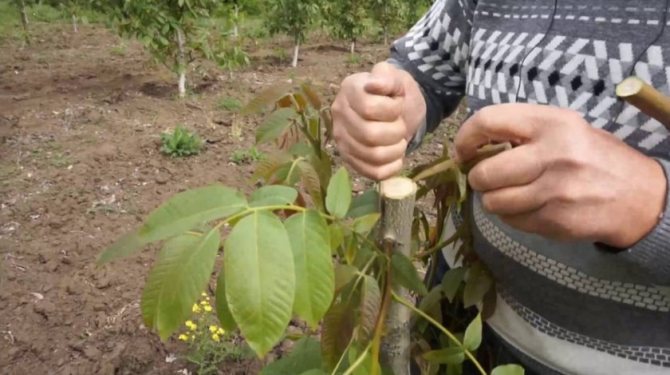

Grafting a walnut is necessary in the following cases:
- if you want to get a seedling that has all the properties of the mother plant;
- for cuttings of an unusual variety that do not differ in frost resistance or strong immunity;
- when the tree is not producing enough fruit;
- the branches of a mature tree are aged, there is visible damage, or drying out is observed.
How walnuts multiply at home
Walnuts can be propagated in other ways besides grafting. All of them have their own advantages and disadvantages, they are not particularly complex. A novice gardener can also cope with reproduction at home.
Propagation of walnuts by nuts
Propagation by walnut fruits is used to breed new varieties, which are subsequently taken as a rootstock for grafting. The method is suitable for the northern regions of the country in order to obtain a seedling that is maximally adapted to the harsh growing conditions.
Fruit propagation is started in the fall in order to minimize labor costs. Cracked nuts that are not suitable for storage are selected and planted in fertile soil. Work is planned for November. This is where all the actions end. During the winter, the seedlings will root well and begin to grow actively in the spring.
If there is a need for spring planting, then the nuts are preliminarily subjected to stratification, after which they are germinated in wet sand in a cool place for 2 months. Fruits are planted in loose soil. You should not expect good germination, since walnuts germinate tightly in spring.
How to propagate walnuts with branches
Vegetative propagation is distinguished by the fact that it always produces a seedling of the desired variety, which retains all the characteristics of the mother tree. To do this, use the coppice branches of the current season, which are located at the bottom of the trunk. For rooting you need:
- Prepare a groove 15-20 cm deep near the tree trunk.
- Tilt the walnut branch, wire it or break it, pin it to the ground.
- Cover the growth with fertile soil and water abundantly.
Seedlings are separated from the mother tree next spring. Immediately planted in a permanent place, since the nut does not tolerate transplantation.
Propagation of walnut cuttings
Propagation of walnut by cuttings is not much different from cuttings of fruit trees at home. To begin with, shoots are harvested:
- Cut annual, healthy branches 35-40 cm long.
- Cuttings are cut, the length of which is 15 cm, and the thickness is no more than 7-15 mm.
Shoots are placed in wet sand and stored in a dark place at a temperature of 0 ... + 5 ° C. In winter, the cuttings are examined, if the humidity is not enough, then the sand is additionally sprayed from the spray bottle.
What stock should be taken
When choosing a stock, you need to give preference to the plant that is most resistant to the climate in a particular region. The most promising seeds are those with increased frost resistance, for example, Manchurian or gray walnut.
Manchurian
The growing region of the Manchurian nut is Primorsky Krai, China, the Far East. To increase the frost resistance of the tree, it is recommended to graft Manchurian and walnuts. You can do this vaccine, but the procedure itself is complicated.
Budding is in progress. To do this, all the wood is removed from the shield, after which the peephole is attached. You can also graft with a handle, The problem only arises if the diameter of the trunks is different. It is enough to make a longitudinal cut and release the juice. The survival rate is only 25-48%, so it is important to perform the procedure correctly and take care of the tree.
Grey
The gray walnut grows up to 30 meters, and in order to use the best properties of this plant during propagation, gardeners recommend grafting in the summer. The tree grows quickly, but needs constant moisture.


In the first winter after vaccination, the gray walnut must be looked after especially carefully. It tolerates low temperatures well, but, in severe frosts, it is recommended to wrap the bottom of the tree with foil to protect the roots from freezing.
The black
It is best to use a common walnut stock for the American black walnut graft. One- and two-year-old seedlings are used. Gardeners most often use black walnut, because its survival rate is 100%.
Cordate
The unusual shape of the heart nut makes gardeners use this plant for grafting and transfer the properties of the variety to new trees. The average height of a nut is up to 15 meters, but in the Moscow region it grows no higher than 10 meters. You can grow this variety of nuts at home, on your site. In order to preserve all the properties of the tree and increase the chances of a positive result, it is recommended to do a summer vaccination.
Siebold's nut
The survival rate of a tree when grafted is from 50 to 78%. Conical staminate buds are used for inoculation.
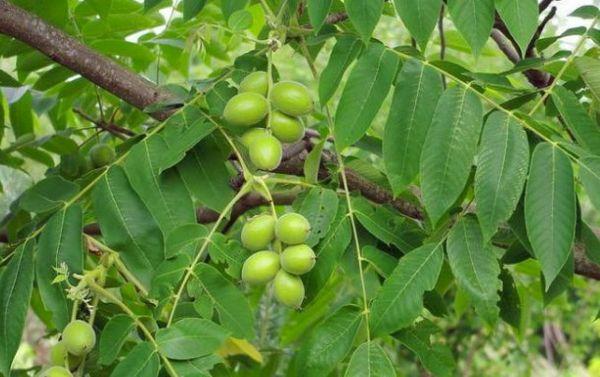

One-year-old seedlings should be chosen, but two-year-olds will also work. This method of propagation is the best way to transfer the best characteristics of the variety to the new tree, and to combine the characteristics of two trees of different varieties. Use the budding or copulation method.
Features of grafting walnut
Grafting on walnuts does not take root well than on other fruit trees. The seedlings will have to work well.


Usually, walnuts are grafted in the summer. This is the best time to work. In different regions, the timing may differ, but it is best to start in the first ten days of July. 2-year-old seedlings grown independently from cuttings or fruits are used as a stock. A fresh bud, which is cut from the desired variety, serves as a graft.
Spring and autumn grafting of walnuts is also possible, but this is rarely done. The survival rate of seedlings is low.
More often, gardeners prefer winter walnut grafting, which is carried out at the end of winter. However, the stock and cuttings for the scion are harvested from the end of autumn. This method is more suitable for experienced gardeners who are already familiar with the grafting method.
How to plant a walnut at home
Grafting a walnut is not an easy matter, the survival rate of planting material is not always high. However, it is worth taking the risk in order to end up with a varietal seedling that will begin to bear fruit early and will be adapted to the local climate.
Summer budding
Inoculation with an eye or kidney is called budding. It is carried out according to the instructions:
- On the green handle, circular cuts are made with a special knife with two parallel blades. The kidney should be between the incisions.
- On the reverse side of the cutting, a horizontal incision is made so as to carefully remove a piece of bark with a bud.
- Dirt and dust are removed from the stock, the same incision is made at a distance of 7 cm from the ground and a piece of bark is removed.
- A half-ring with a bud is placed on the stock, well wrapped with foil so that the peephole remains visible.
The walnut graft is left for 15-20 days. If during this time it remains green and does not dry out, then you can judge the success. After that, the bandage can be loosened, the film is completely removed after 2-3 months. During this time, the stock will grow well with the scion.
Winter vaccination (copulation)
At the end of winter, the harvested walnut seedlings and cuttings for grafting are brought into the heat. The room temperature should be at + 15 ° C. After which they are left to warm up for several days. Next, the instructions follow:
- Prepare the Epin solution and place the scion cuttings in it for 20-30 minutes.
- Cut off the lower ends of the scion and rootstock obliquely. The bud on the scion should be located on the back side of the cut.
- Having retreated 1.5 cm from the cut, cut the bark on the rootstock and scion to form a tongue.
- Connect the inoculation so that the tongues go into one another.
- Fix the grafting site tightly with foil or twine.
Stratification
It is known that walnut stratification involves planting a tree. Before laying, the nuts should be soaked in water for 2-3 days. The water should be at room temperature and changed every day. Steamed sawdust is used as substrates. The container will fit in the form of a shallow drawer. To begin with, sawdust is poured. Nuts are laid out on the edge. A layer of substrate is again poured on top. If the roots germinate early, the temperature drops to +2 degrees. Before planting, it increases for several days.
After spring frosts, you can plant the nut in the ground. To avoid damage to seedlings from the sun, the soil is covered with sawdust on top.
We would like to bring to the attention of gardeners a reliable method of grafting walnuts.
At the end of August, a cutting is grafted onto a two-year-old seedling (very thin one-year old) by copulation. The inoculation site is neatly tied with a narrow strip of thin elastic rubber. It largely eliminates the displacement of the edges of the grafting components. The stalk is "taken" from the growth of the current year. Try to make it as round as possible in cross section, so that its core is as small as possible, so that it does not have male inflorescences (in extreme cases, they are removed), so that it is not too long and thick (length 50-70 mm, and a diameter of 8 mm), with 3-4 growth buds, including also the apical one.
Cutting off the cuttings from the mother tree, immediately remove the leaf blades, leaving only a part of the petiole about 25-30 mm long.
Technical details are also essential.
The grafting knife is a straight razor blade, sharpened. The oblique cuts should match as perfectly as possible. Graft quickly and immediately put on a plastic film bag measuring about 60X150 mm, tie it tightly below the strapping.
In winter, the grafted nut is covered with snow. In the spring, when the leaves that have developed from the buds of the scion begin to touch the walls of the transparent bag, it is opened in the upper part, preferably on a cloudy day, so as not to burn the young shoots with direct sunlight.
When the growing shoots rise above the upper edges of the open bag, they tear it along the side seam and after a day or two are completely removed. The harness is removed, as a rule, as needed.
It is important to remember that each of the described manipulations of the proposed method of late summer vaccination is required.This has been proven by more than one year of practice.
By the way, stone fruit, pome fruit, and ornamental shrubs are grafted with the same method, and all grafts winter wonderfully in polymer bags and in spring they please with friendly growth and active development. The growth during the growing season for walnut and stone fruit is approximately 1.5 m.
Post-vaccination care
After grafting, walnut seedlings need careful care. After the dressing is removed, the vaccination site is checked. It must be dry. If several cuttings were used as a scion, then it's time to choose the strongest and most developed one. It is left for further growth, the rest are shortened. Cut them out after the tree has taken root well. Experienced gardeners recommend leaving the strongest shoot that grows from the lower bud, which is closer to the grafting.
In the next 3-4 years, the crown of the tree is being formed. All thickening shoots are cut out, which speeds up the laying of fruit buds. In addition, the tree needs more moisture during this period. The soil is kept in good condition and free of weeds. Moisten the area of the trunk circle 50-60 cm deep. It is watered mainly in the summer. In autumn, the soil is not moistened, otherwise the growth of grafted seedlings is difficult, and their winter hardiness decreases.
Fertilizers affect the growth of walnuts more. After grafting, the seedlings need nitrogen, phosphorus and potassium supplements. They are brought in according to the instructions:
- At the beginning of summer, dry nitrogen mixtures are distributed around the trunk circle. For 1 sq. m consume 20-25 g of top dressing.
- In autumn, 130 g of superphosphate and 35 g of potassium chloride are introduced under the digging. This is the norm for 1 sq. m for a tree up to 10 years old.
With the age of the tree, the amount of dressings is increased by 20 g. In the dry season, all fertilizers are applied in liquid form, while in rainy weather it is better to switch to granules.
How quickly a walnut will develop after grafting depends on the condition of its leaves. Therefore, the gardener should pay special attention to the fight against diseases and pests. The leaf cover of the tree must be healthy. For young seedlings during this period, chemical agents are contraindicated. It is better to use traditional methods of prevention and prepare an infusion for diseases yourself:
- Pour onion peels, chopped garlic, 2 tbsp into a 3 liter container. tobacco. The mixture should take up 1/3 of the volume of the bottle.
- Pour boiling water over the container and leave for 7-10 days in a dark place.
- Strain the finished solution. Dilute 10 liters of water before spraying trees.
This infusion is used in early spring, in the closed bud phase and along the "green cone".
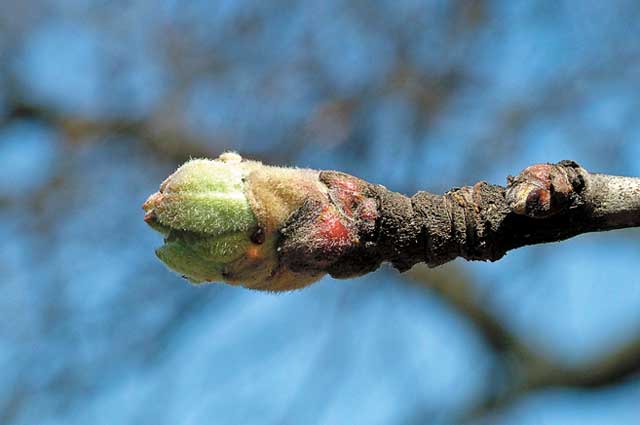

The following method will help to cope with pests after grafting a walnut:
- Pour 500 g of yarrow herb and the same amount of wormwood in a 5 liter bottle.
- Pour boiling water over the container, leave to infuse for 2 days.
- Drain the infusion, boil for 30 minutes, cool and dilute with 10 liters of water.
The mixture helps to get rid of moths, aphids, ticks, caterpillars and other pests. Spraying is repeated every 10 days.
Experienced gardening tips
Do not rush to uproot the walnut if you do not like the variety or the tree dies. Gardeners claim that it can be saved by vaccination. It is enough to master the skills of budding.
Walnut grafting is a good solution for residents of the Northern and Central regions of the country. Any frost-resistant tree variety can be grafted with a southern shoot that you like, which will take root well and bear fruit.
For the grafting to be successful, the seedling must be planted in the correct place. After that, take good care of it for 2 years, and only then use it as a rootstock.

